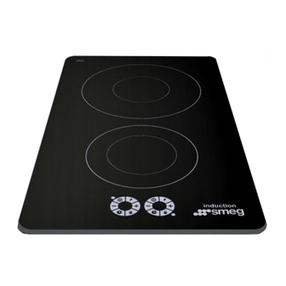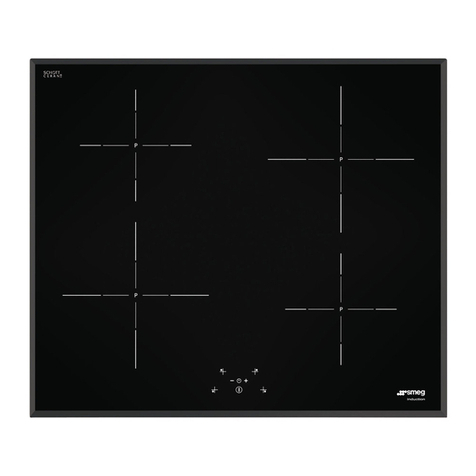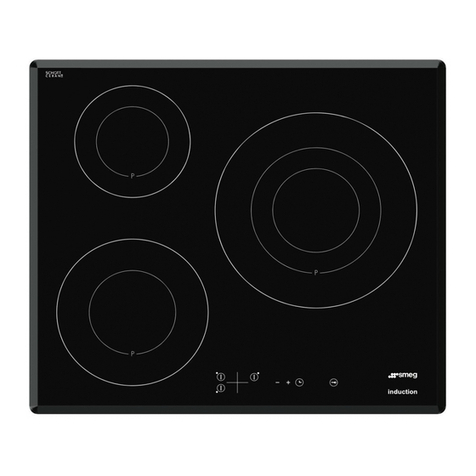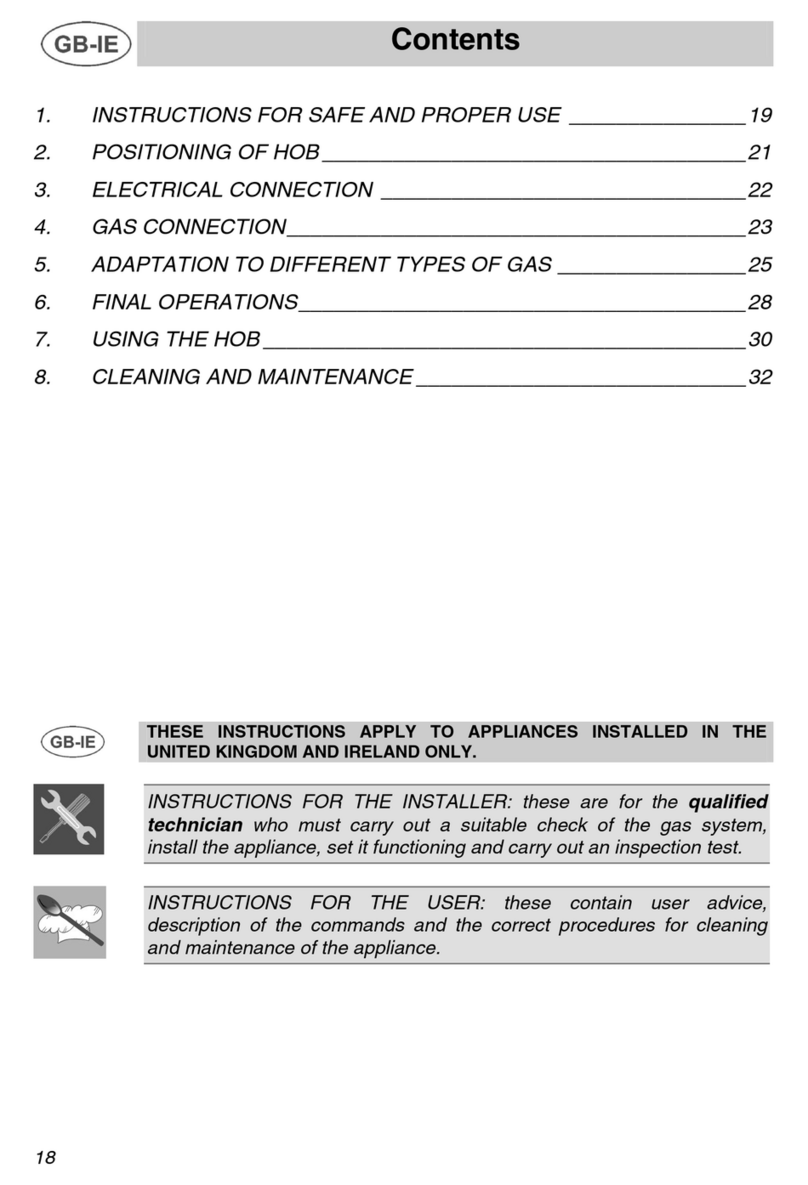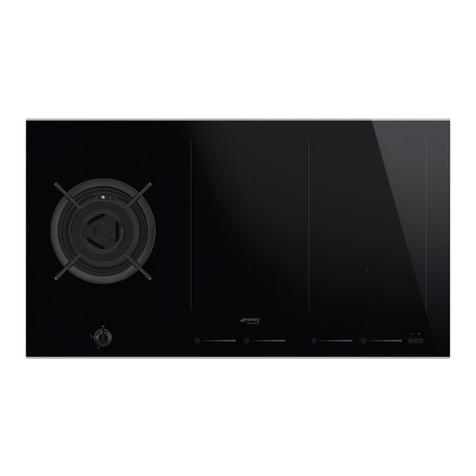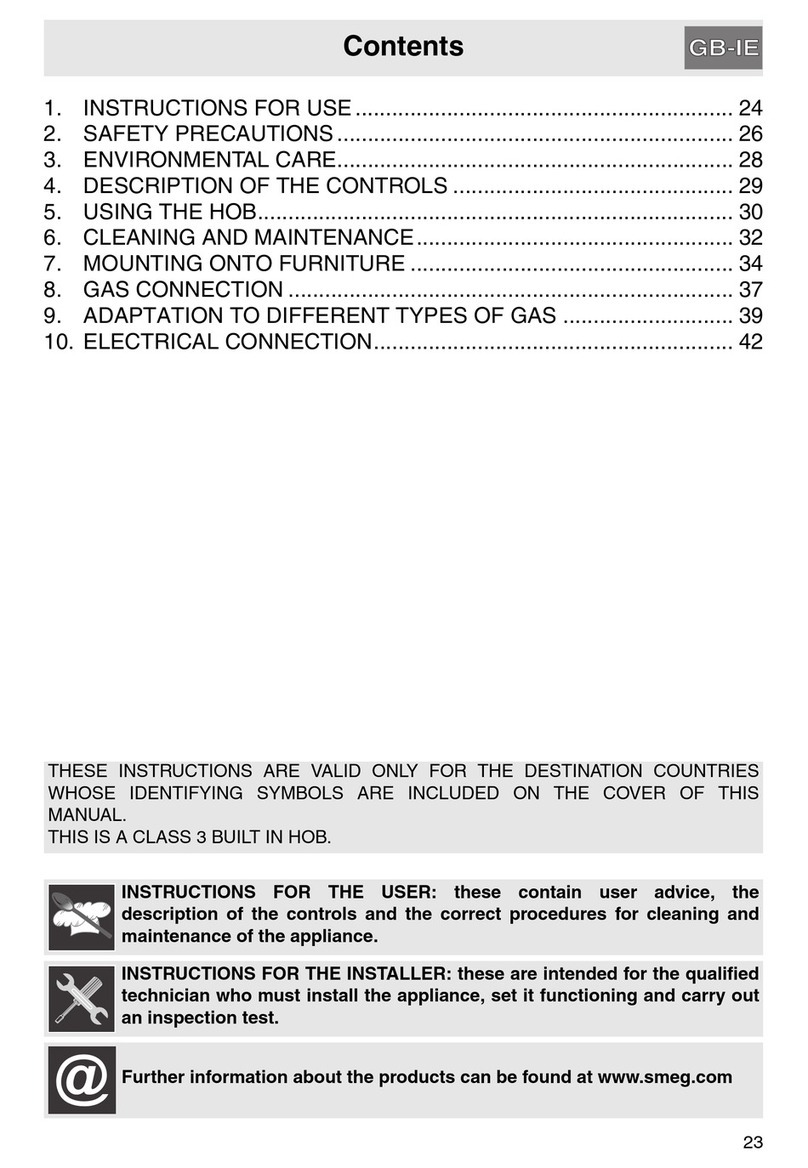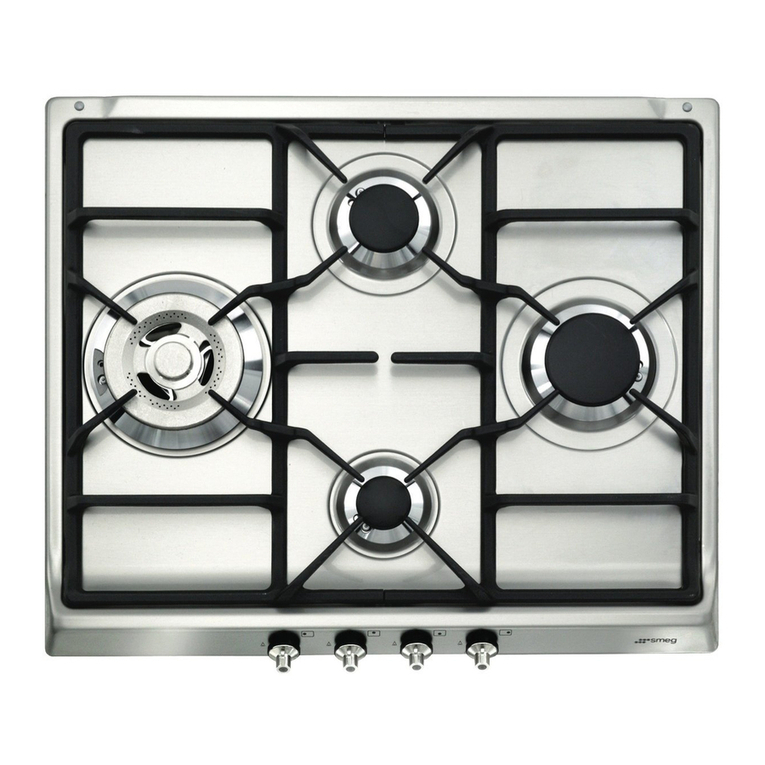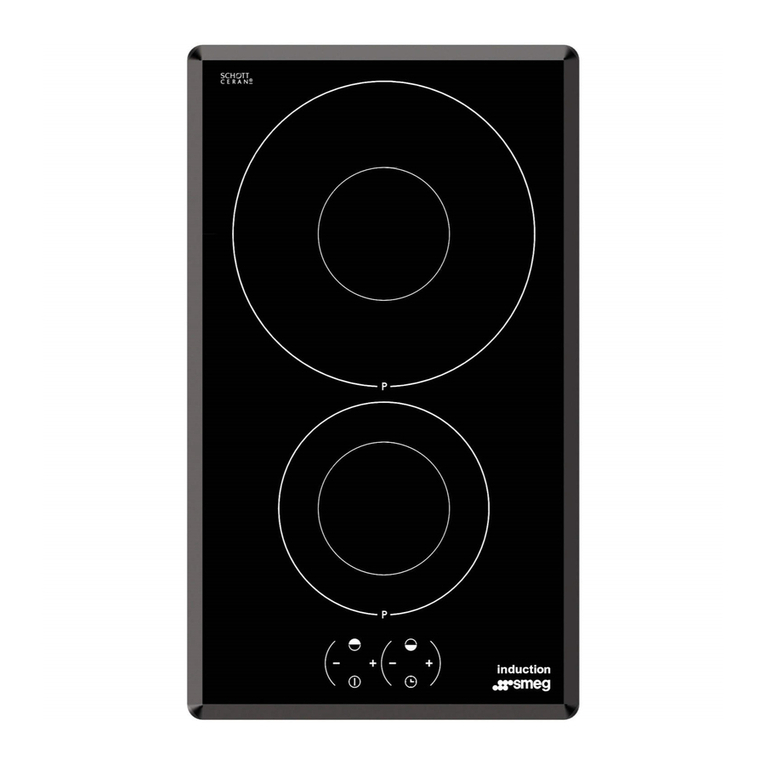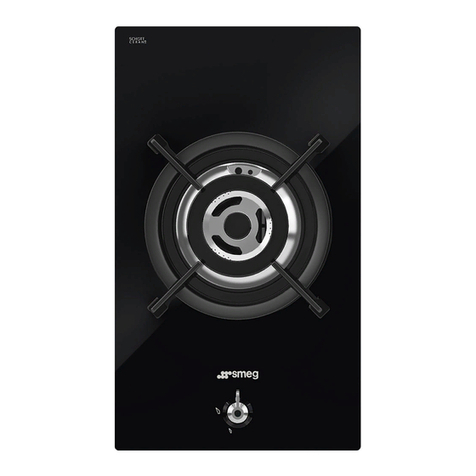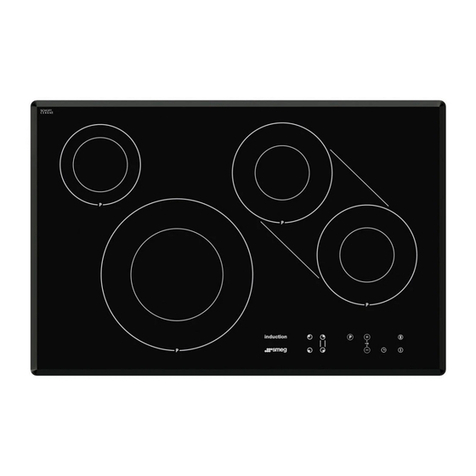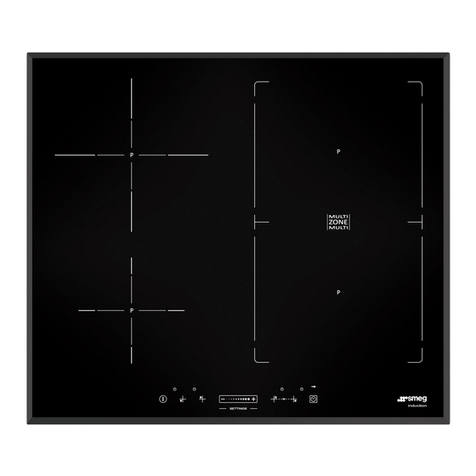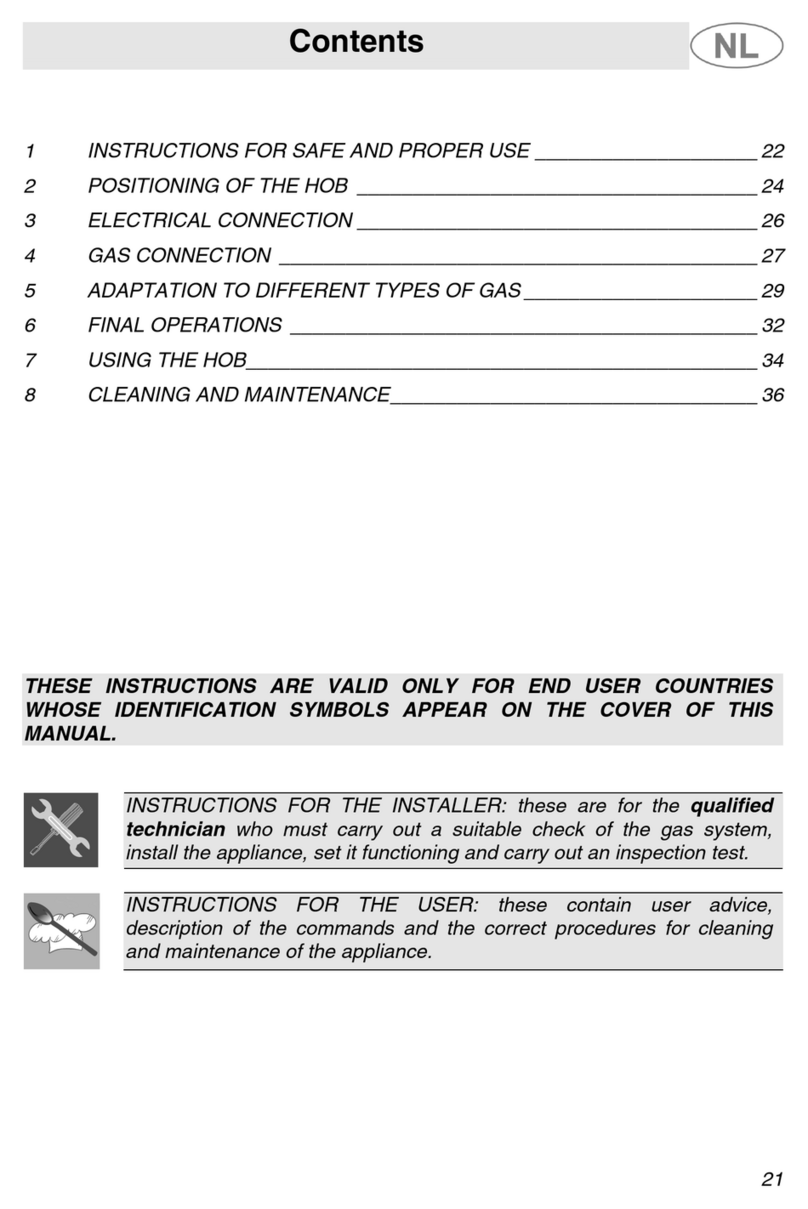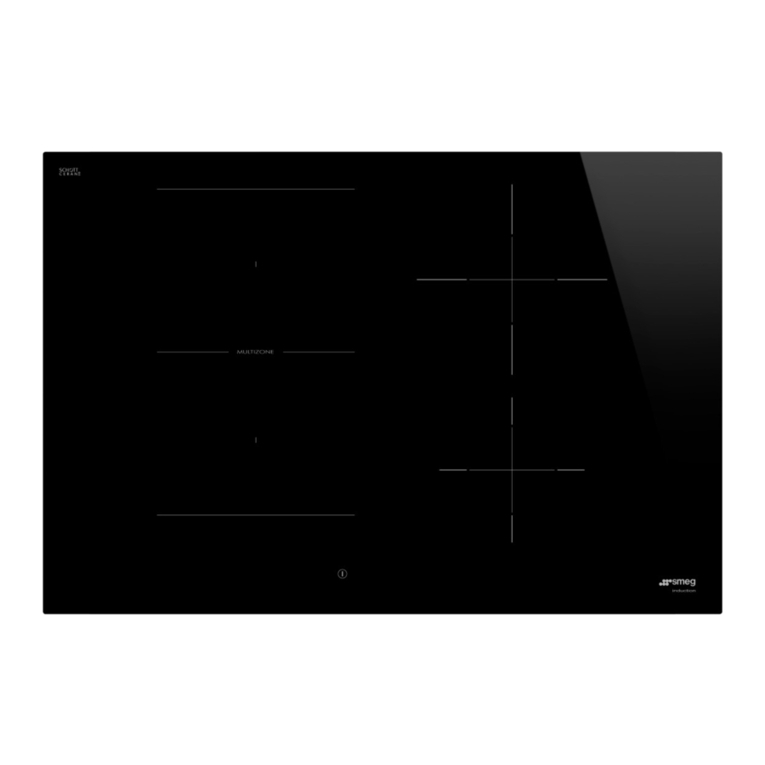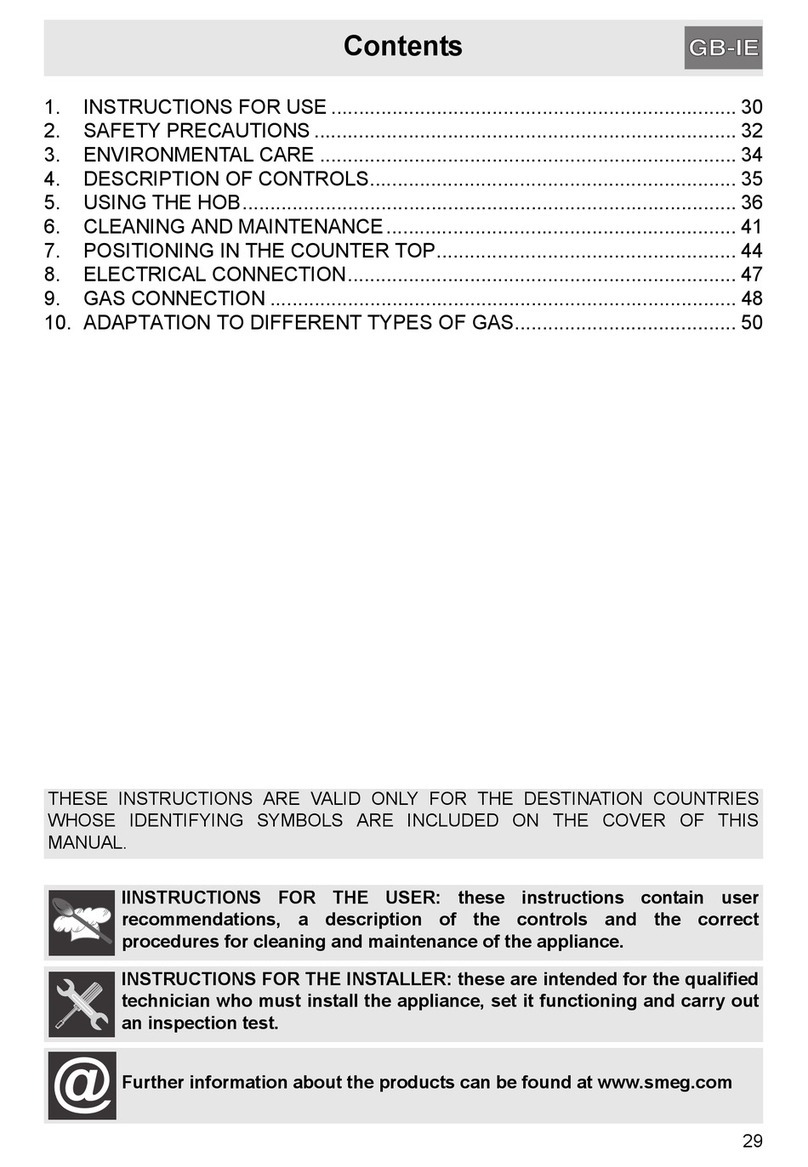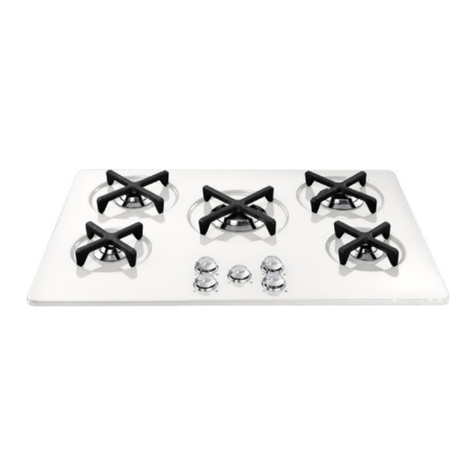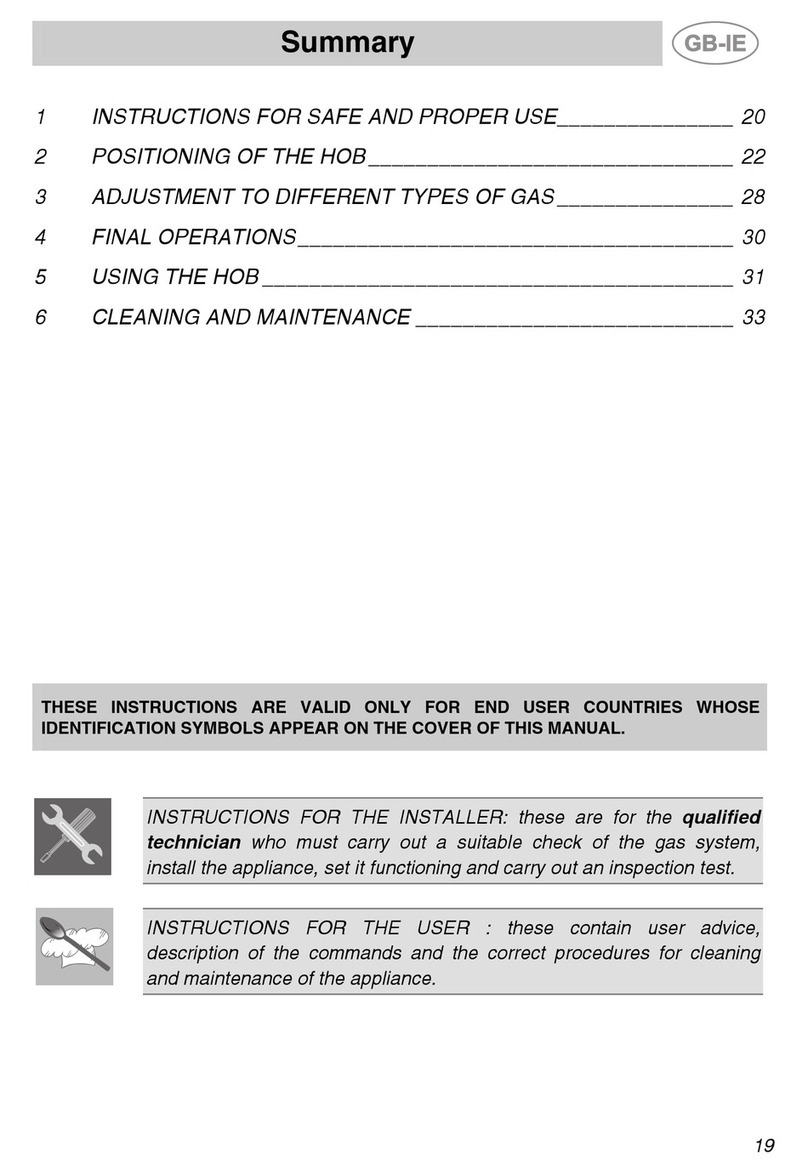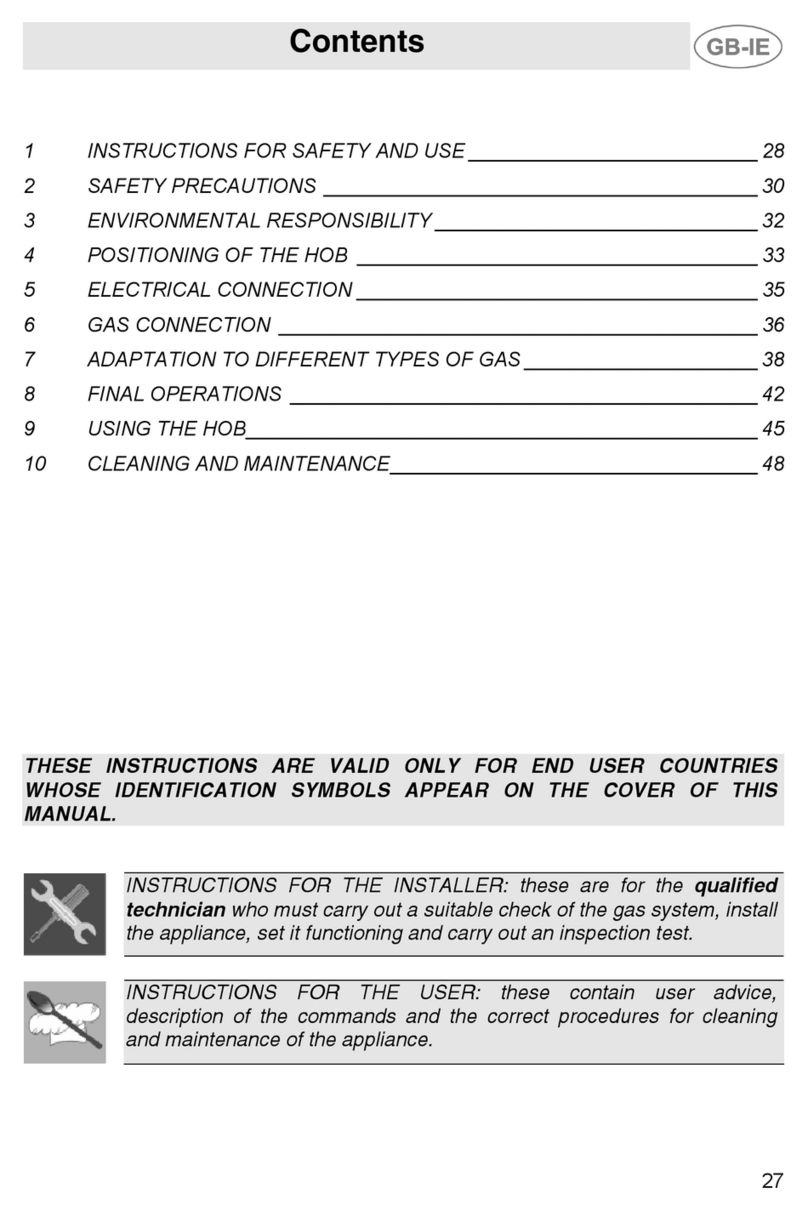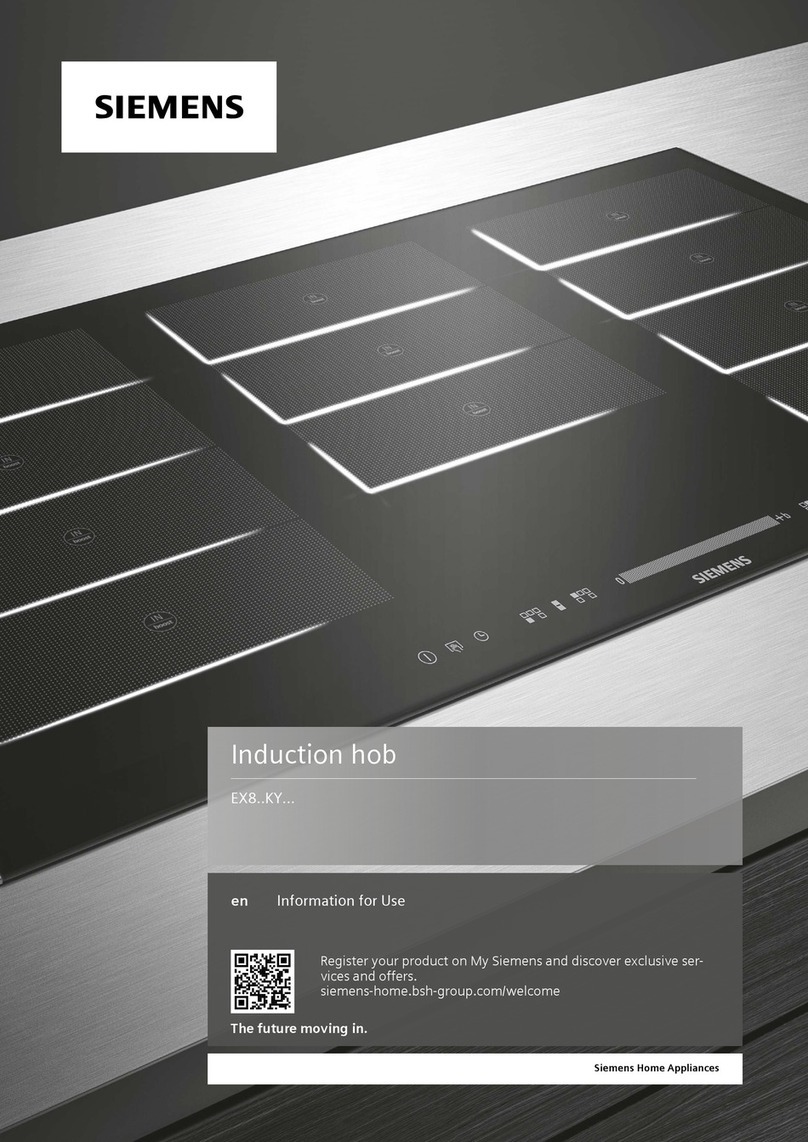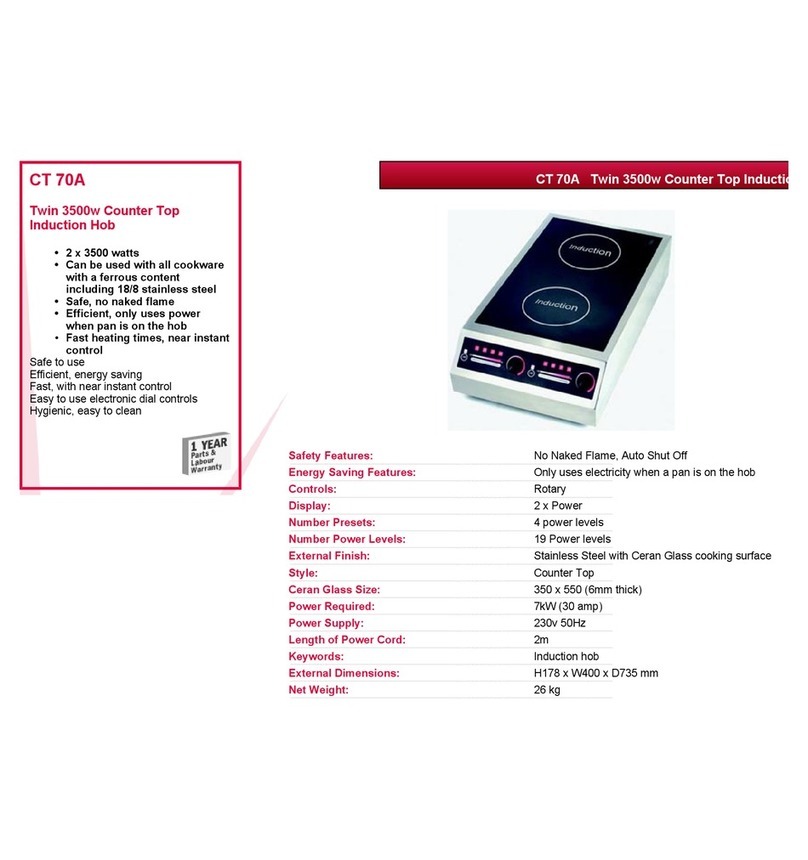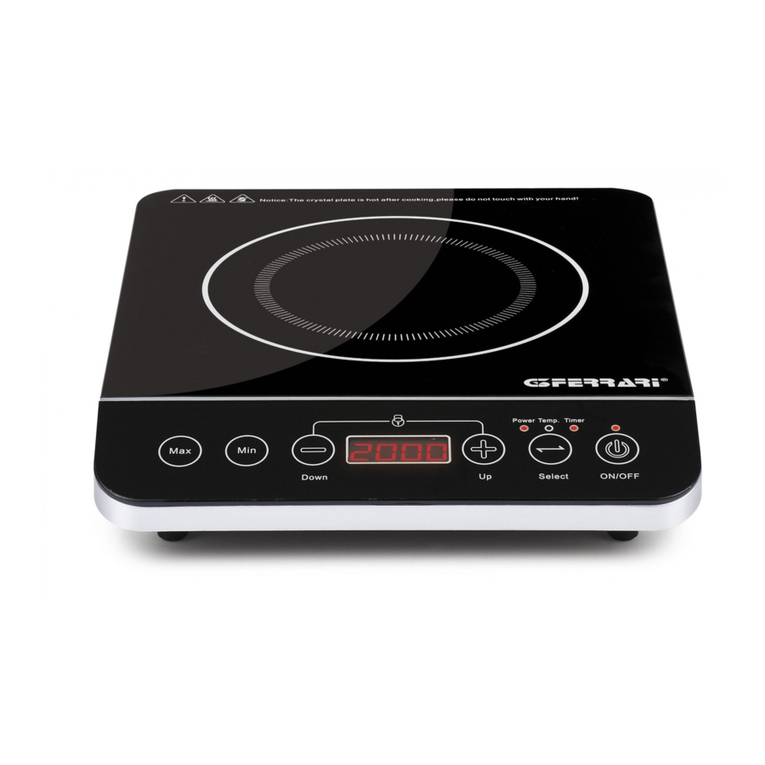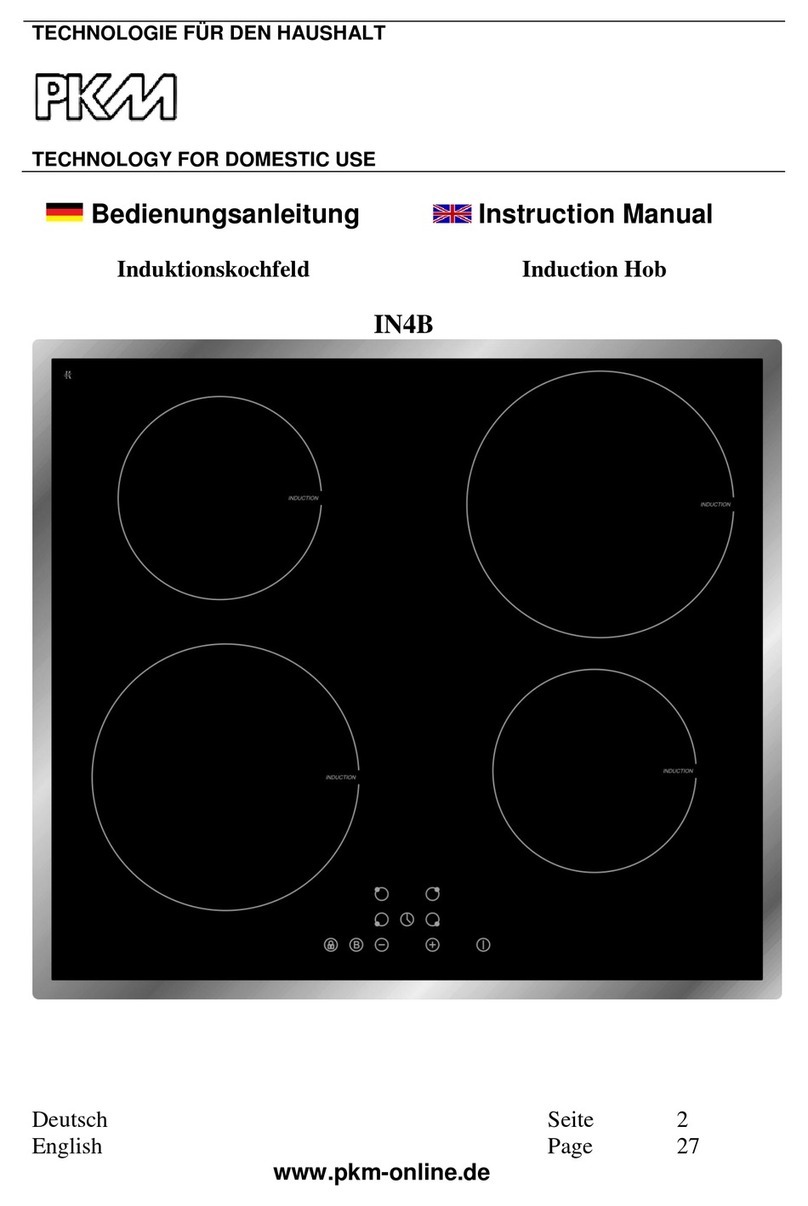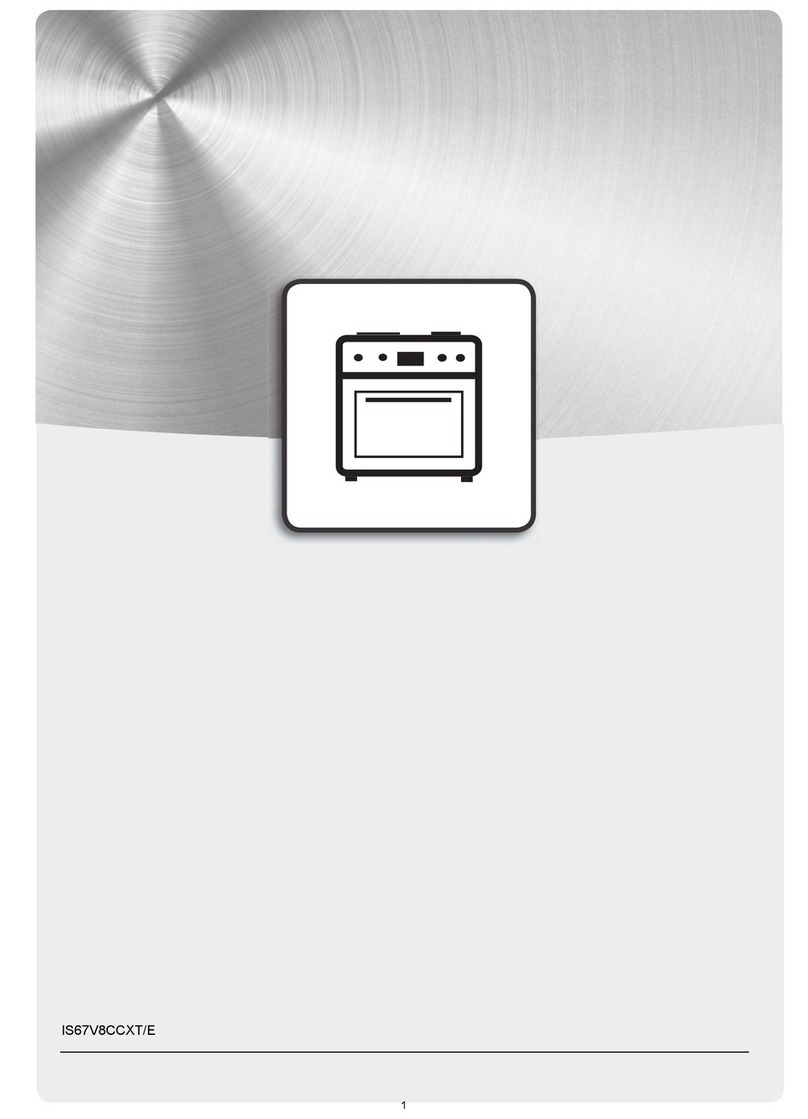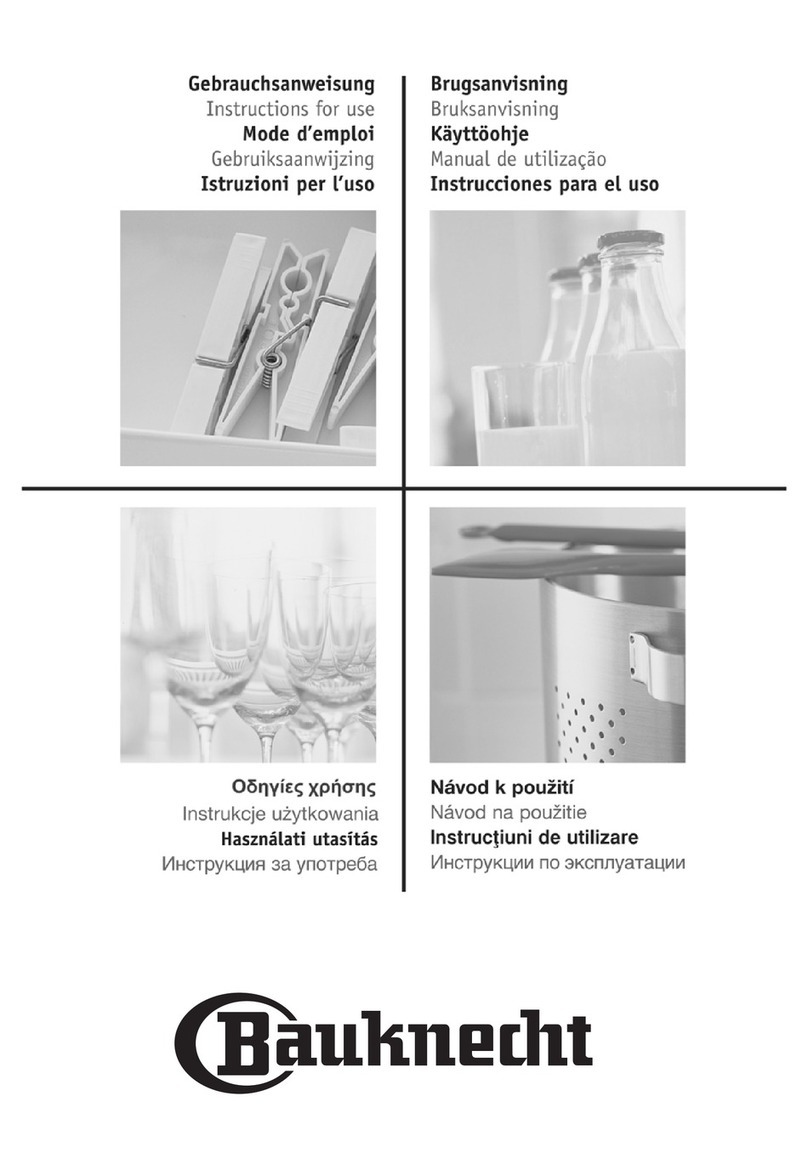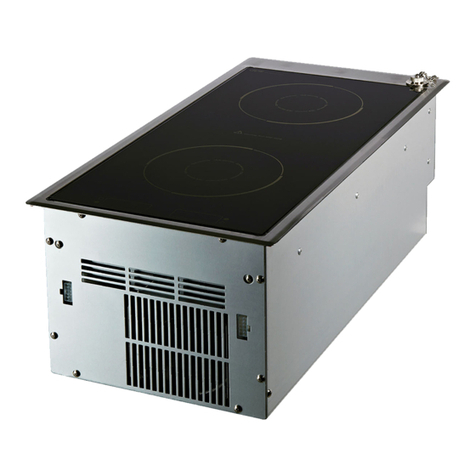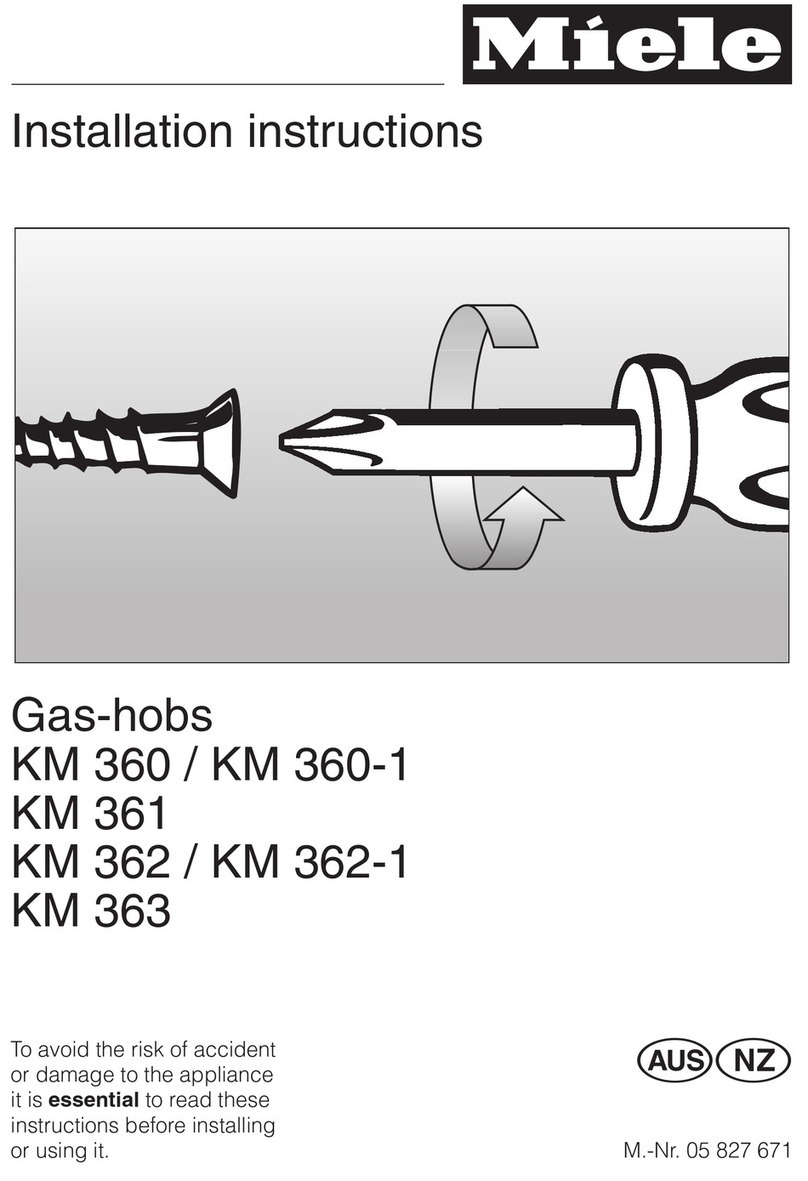Precautions for Safety and Use
5
IMMEDIATELY AFTER INSTALLATION, CARRY OUT A QUICK TEST
ON THE APPLIANCE FOLLOWING THE INSTRUCTIONS PROVIDED
LATER IN THIS MANUAL. SHOULD THE APPLIANCE NOT FUNCTION,
DISCONNECT IT FROM THE SUPPLY AND CALL THE NEAREST
TECHNICAL ASSISTANCE CENTRE.
NEVER ATTEMPT TO REPAIR THE APPLIANCE YOURSELF.
AFTER EACH USE OF THE APPLIACE, ALWAYS CHECK THAT THE
CONTROL KNOBS ARE TURNED TO OFF
NEVER PLACE FLAMMABLE OBJECTS IN THE OVEN: IF IT SHOULD
ACCIDENTALLY BE SWITCHED ON, THIS MIGHT CAUSE A FIRE.
THE IDENTIFICATION PLATE, WITH TECHNICAL DATA, SERIAL
NUMBER AND MARKING IS CLEARLY VISIBLE UNDER THE CASING.
THE PLATE ON THE CASING MUST NOT BE REMOVED.
BEFORE CONNECTING THE DEVICE, MAKE SURE THAT IT HAS
BEEN REGULATED FOR THE TYPE OF GAS THAT WILL FEED IT,
CHECKING THE LABEL UNDER THE HOB.
NEVER PLACE PANS WITH BOTTOMS WHICH ARE NOT
PERFECTLY FLAT AND SMOOTH ON THE HOB GRIDS.
DURING USE THE APPLIANCE BECOMES VERY HOT. TAKE CARE
NEVER TO TOUCH THE HEATING ELEMENTS INSIDE THE OVEN. TO
AVOID BURNS AND SCALDS CHILDREN SHOULD BE KEPT AWAY.
INSTALL THE APPLIANCE SO THAT WHEN DRAWERS OR DOORS
OF UNITS INSTALLED AT HOB HEIGHT ARE OPENED, ACCIDENTAL
CONTACT WITH PANS ON THE HOB IS NOT POSSIBLE.
WARNING - IN ORDER TO PREVENT ACCIDENTAL TIPPING OF THE
APPLIANCE, FOR EXAMPLE BY A CHILD CLIMBING ONTO THE
OPEN OVEN DOOR, THE STABILIZING MEANS MUST BE
INSTALLED. PLEASE REFER TO INSTRUCTIONS FOR
INSTALLATION.
NEVER USE PANS OR GRIDDLE PLATES WHICH PROJECT BEYOND
THE OUTSIDE EDGE OF THE HOB.
